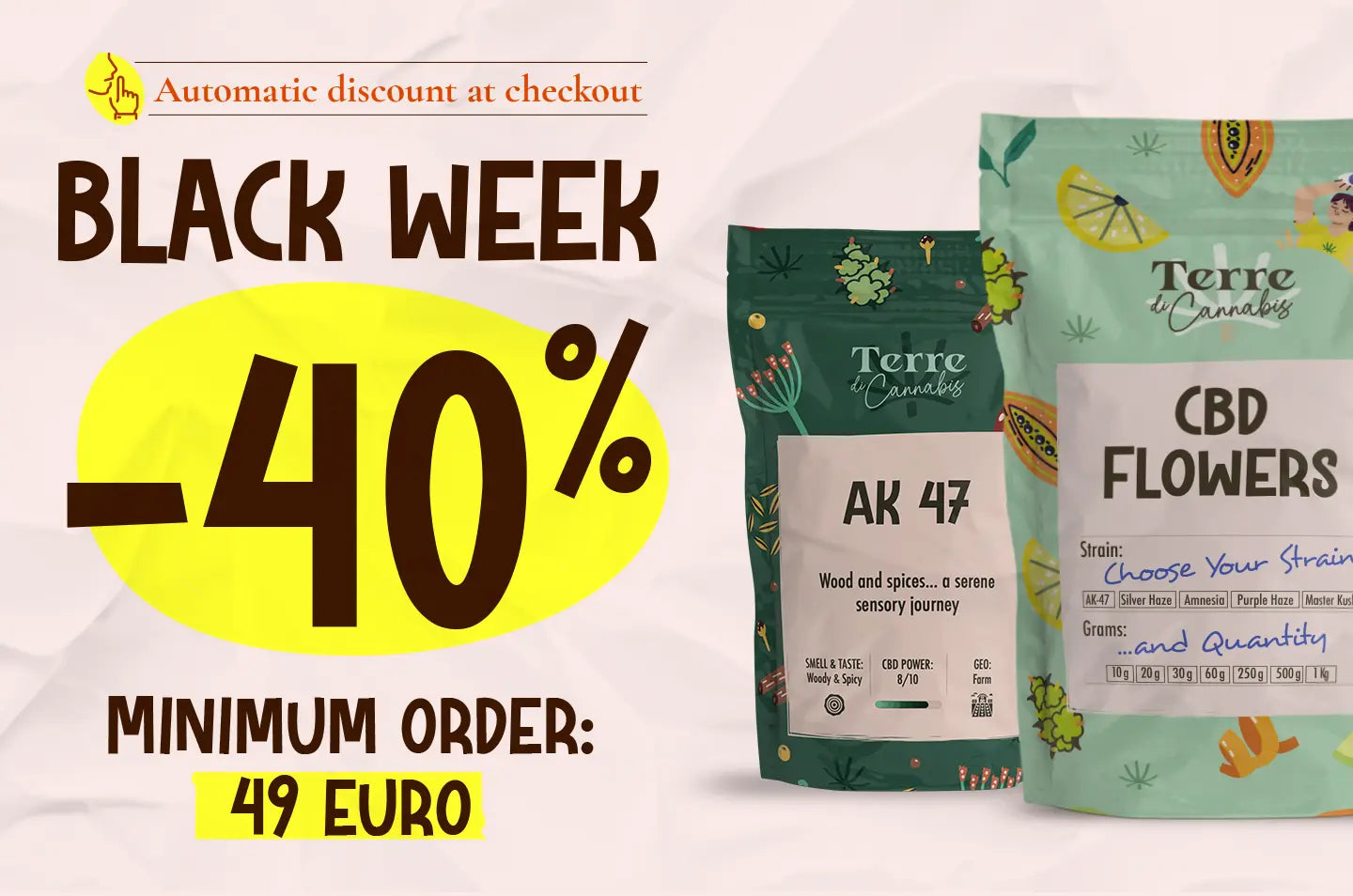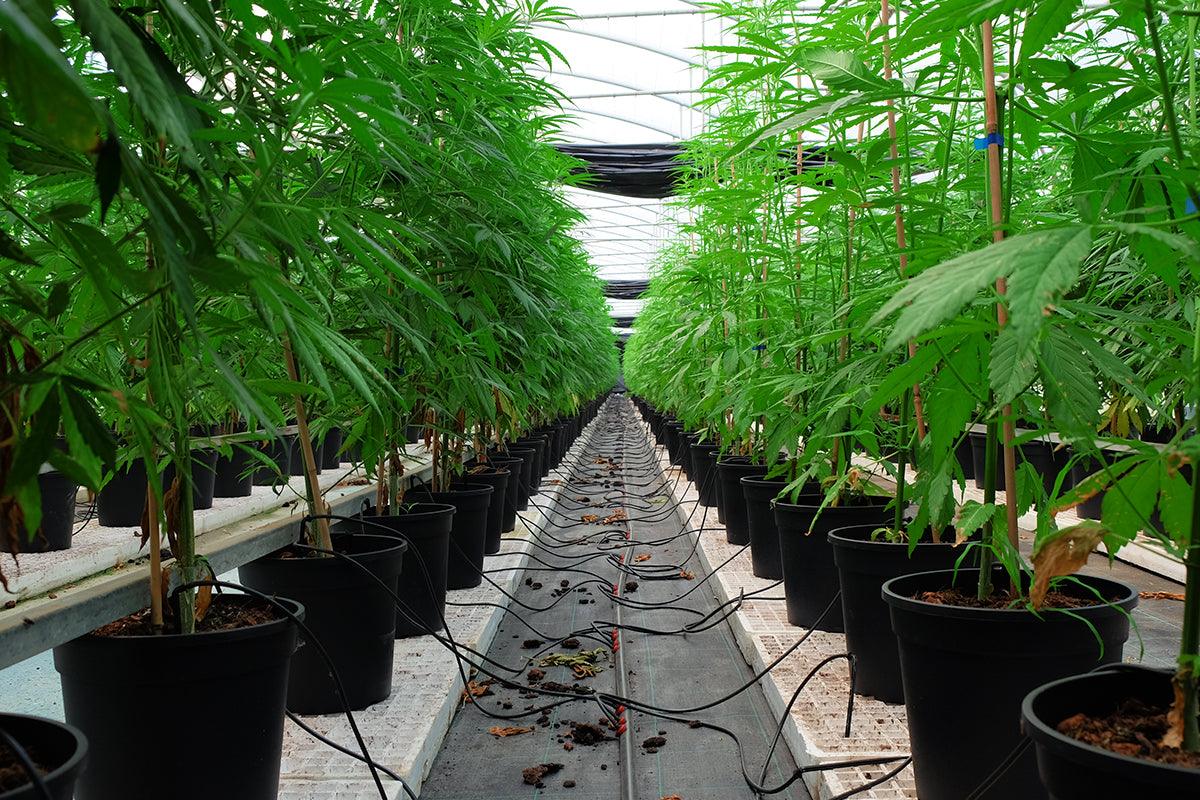Use perlite to improve your growing medium
Cannabis is a plant that is apparently easy to grow: it has a very high resistance to stress - especially in hybrid genetics - which retain the best characteristics of all cannabis strains, and it does not need too much care, other than light and water in amount. However, a good grower knows the difference between a plant grown well and a plant grown in such a way as to optimize its yield and make the most of its potential. This is where the many tricks of expert growers come into play.
In fact, there are dozens of growing guides, which take into consideration the balance between the many factors that determine the success of a cultivation . For example, an important aspect to take into consideration is drainage, which guarantees correct aeration of the soil and roots: perlite , a volcanic glass treated at very high temperatures, can be a good ally to make your seedlings grow as best as possible .
What are the factors to keep under control?
To make marijuana cultivation a successful operation, a series of very important factors must be kept under control, which together determine the survival of the plant and the yield of the crop. There are four things to keep an eye on when growing cannabis: substrate, watering, light and nutrients .
- The substrate is certainly the first factor to take into consideration : the choice of a type of substrate will have a huge impact on the outcome of the operation and, above all, it is the first step to address when starting cultivation.
- Light is very important throughout the life cycle of the plant, but above all it is important that the alternation between light and dark is respected . In fact, photosynthesis occurs during daylight hours : through chlorophyll the plant absorbs light and converts light energy into chemical energy. During the hours of darkness, however, the plant only carries out cellular respiration, taking in oxygen and releasing carbon dioxide, essential for cell metabolism. The balance between these two processes is essential for the correct development of the plant.
- Nutrients, in particular nitrogen and potassium, are very important in the growth phase . The larger the plant becomes, the greater the need for fertilizer: it may happen that at a certain point the plant shows a lack of nutrients, filling up with yellow spots. The dosage of fertilized water will need to be increased, or nutrients will need to be administered more frequently.
- The water requirement proportionally follows the growth of the plant , and increases as its size increases. The amount and frequency of watering increases as the weeks pass. It is very important to be vigilant and respond to this increasing demand for water, especially in coco crops. The ideal irrigation water temperature should be around 22 degrees .
The growing medium
The substrate is very important, because it is the place where the roots of the plant are born and develop, fundamental for its existence and growth.
Different substrates can offer different growth rates. The most common are earth , coconut and water . There is no absolute best, each has its own qualities, strengths and weaknesses. The soil allows rapid growth only if it is adequately aerated and has a light structure: the roots need oxygen and develop better when they grow in a light and airy substrate. The soil contains many nutrients and this allows you not to add liquid foods so soon.
Coconut is an even more aerated growing medium . It guarantees an excellent start, because the roots develop very quickly thanks to the abundance of oxygen contained in the coconut fibres. As a result, the plant will be stronger and grow faster. The drawback of coconut is that it contains no nutrients, so you have to start administering liquid nutrients to the plant very early.
Using water as a substrate, i.e. growing Cannabis with the hydroponic technique , allows for very fast growth, but the stakes are high. It is a very laborious system, which requires the use of many electrical devices, which continually expose the plants to the risk of breakdowns or blackouts. The water in which the roots are immersed makes them develop very quickly, thanks to the large quantity of oxygen contained in it, but you have to be very careful. If you're a beginner, it's best to avoid it.
Substrate and drainage: perlite
Choosing good soil is very important because, by conveying nutrients, the substrate significantly affects the development of the plant. A fundamental aspect in managing the substrate is drainage , i.e. the ability of the soil to let the roots breathe , allowing them to grow and develop at their best. To optimize drainage, some elements that promote ventilation can be used.
One of these is perlite , a widely used soil improver thanks to its high lightness. It is an amorphous volcanic glass , with a relatively high water content, which forms completely naturally. To be used in agriculture it is artificially treated and subjected to extremely high temperatures (850-900°C); with heat the volcanic glass expands, until it becomes the commercial product called perlite.
Perlite is commercially available in three different formats: fine, medium and coarse. The first is the most used in cannabis cultivation, often used as a soil improver for coconut fiber or soil thanks to its ability to retain greater quantities of water. The surface of the perlite, in fact, is covered with a film of water and creates small air pockets, regardless of how wet and humid the growing medium is.
Perlite is a great ally of growers because, by increasing the drainage of the substrate, it helps prevent the accumulation of nutrients and water, facilitating root development and increasing the availability of oxygen.
What is the best way to use perlite?
Perlite could also be used as the sole substrate, but this is an advanced approach, commonly used in hydroponic cultivation. Therefore, if you are not very experienced, it is better to fall back on a substrate composed of several elements: usually perlite is mixed with soil or coconut fiber in order to create a balanced substrate for the cultivation of cannabis.
If the substrate is composed of soil or coconut fibre, a quantity of perlite can be added in a proportion between 10% and 50% of the total volume. What affects the amount of perlite to mix with the substrate is the amount of fertilizer you intend to use during cultivation.
- If you plan to start a modest fertilization program , we recommend using between 10 and 20% perlite , a volume that provides the right balance between water retention and water runoff.
- However, if you intend to use large quantities of fertilizers or supplements , a substrate mix with 30–50% perlite can avoid the blockage of nutrients generated by an overload of fertilizers, favoring drainage and the consequent flow of water .
What are the benefits of perlite?
Excellent drainage properties are not the only positive feature of perlite. There are many other reasons that should convince growers to use this element in indoor cultivation.
- Oxygen levels increase exponentially , because perlite creates air pockets after absorbing water. The roots thrive on oxygen and the plants will grow much better.
- Perlite is an inert substrate, so it does not interfere with nutrient concentrations .
- It is ideal if you are growing clones. The extremely light structure of perlite allows the roots to easily penetrate the substrate .
- It has a low weight and this makes it useful in massive cannabis cultivations, when there is a need to move the pots.






